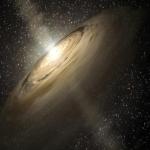موشک فالکون 9 شرکت اسپیسایکس شب گذشته (دوشنبه) از ایستگاه نیروی هوایی کیپکارناوال فلوریدا به همراه یک ماهواره ارتباطات تجاری به مدار پرتاب شد.
این موشک 68 متری در ساعت 22:06 به وقت گرینویچ به سمت نقطهای در 88 هزار کیلومتری زمین پرتاب شد تا ماهواره Thaicom 6 متعلق به شرکت اپراتور ماهوارهای Thaicom را در این مدار قرار دهد.
این ماهواره 3016 کیلوگرمی قرار است از آن نقطه، خود را تا ارتفاع 35 هزار کیلومتری پائین آورده و زاویه مدار خود را به گونه تغییر دهد تا بتواند بطور دائم به ارسال خدمات تلویزیون دیجیتال برای مشتریان در تایلند و مناطق اطراف آن بپردازد.
فضاپیمای Thaicom 6 که توسط شرکت اوربیتال ساینس ساخته شده، همچنین از تجهیزات دیگر برای ارائه خدمات ارتباطی برای مشتریان در جنوبشرق آسیا و آفریقا از جمله ماداگاسکار برخوردار است.
هزینه این ماهواره از جمله خدمات پرتاب و بیمه حدود 160 میلیون دلار بوده و تاکنون دو سوم ظرفیت ماهواره به فروش رفته است.
پرتاب روز دوشنبه، دومین ماموریت از این نوع در یک ماه گذشته برای شرکت اسپیسایکس بوده است.
در ماه دسامبر، این شرکت اولین ماهواره ارتباطات تجاری خود را پرتاب کرده و ادعای خود را در صنعت جهانی پرتاب ماهواره اثبات کرد. این صنعت از ارزشی در حدود 6.5 میلیارد دلار در سال برخوردار است.
پرتاب بعدی اسپیسایکس که برای اواخر فوریه برنامهریزی شده، سومین ارسال از 12 ماموریت انتقال محموله به ایستگاه فضایی بینالمللی است که در قرارداد 1.6 میلیارد دلاری این شرکت با ناسا قرار دارد.
شرکت اوربیتال ساینس نیز که یک قرارداد مجزای 1.9 میلیارد دلاری با ناسا دارد، قرار است اولین ماموریت ارسال محموله از هشت پرتاب خود را در روز چهارشنبه(18 دی) انجام دهد. موشکهای آنتارس این شرکت از یک فرودگاه فضایی خصوصی در جزیره والوپس در ویرجینیا پرتاب میشوند.
با پرتاب امروز، موشکهای فالکون 9 تاکنون هشت بار به فضا ارسال شدهاند که همگی موفقیتآمیز بودهاند. اگرچه در اولین ماموریت ارسال محموله آن به ایستگاه فضایی در اکتبر 2012، یکی از 9 موتور مرحله اول این موشک برای همیشه خاموش شد. این در حالیست که سایر موتورها جبران کرده و موشک توانست با موفقیت فضاپیمای دراگون را بدون مشکل به مدار تعین شده برساند.
پرتاب موفق روز دوشنبه میتواند راه شرکت اسپیسایکس را برای ورود به یک رقابت پر سود برای پرتاب ماهوارههای شناسایی و ارتباطات ارتش آمریکا هموار کند. این حوزه در حال حاضر منحصرا در اختیارUnited Launch Alliance قرار داشته که بطور مشترک زیرنظر شرکتهای لاکهید مارتین و بوئینگ قرار دارد.
SpaceX Falcon rocket lifts off with Thaicom digital TV satellite
A Space Exploration Technologies' Falcon 9 rocket blasted off from Cape Canaveral Air Force Station in Florida on Monday to put a commercial communications spacecraft into orbit for Thai satellite operator Thaicom.
The 224-foot-tall rocket lifted off its seaside launch pad at 5:06 p.m. (2206 GMT), soaring through overcast skies as it headed toward the satellite's drop-off point more than 55,000 miles above Earth, or about one-quarter of the way to the moon.
From that position, the 6,649-pound (3,016 kg) Thaicom 6 satellite is expected to lower itself to about 22,300 miles above Earth and shift the angle of its orbit so that it can be permanently stationed to beam high-definition and digital television services to customers in Thailand and surrounding areas.
The satellite, built by Virginia-based Orbital Sciences Corp, also is equipped to provide other communications services for customers in Southeast Asia and Africa, including Madagascar, Thaicom's website shows.
Including launch services and insurance, the Thaicom 6 satellite cost about $160 million, and so far, about two-thirds of the satellite's capacity has been sold, according to Thaicom.
Monday's launch was the second in just over a month for Space Exploration Technologies, also known as SpaceX.
In December, the California-based firm, owned and operated by technology entrepreneur Elon Musk, who is also chief executive of electric car maker Tesla Motors, launched its first commercial communications satellite, staking a claim in a global satellite launch industry. The industry is worth about $6.5 billion a year, a study by the Satellite Industry Association trade group shows.
So far, privately owned SpaceX has sold about 50 commercial launches worth about $40 billion. About 25 percent of the flights are for NASA, which hired SpaceX, along with Orbital Sciences, to fly cargo to the International Space Station, a $100 billion research complex that flies about 250 miles above Earth.
SpaceX's next flight, slated for late February, will be the third of 12 station resupply missions under its $1.6 billion NASA contract.
Orbital Sciences, which holds a separate $1.9 billion NASA contract, is preparing to launch the first of its eight station cargo runs on Wednesday. The company's Antares rockets fly from a commercial spaceport on Wallops Island, Virginia.
With Monday's launch, Falcon 9 rockets have flown eight times, all successfully, though on its first cargo flight to the station, in October 2012, one of the rocket's nine first-stage engines shut down prematurely. Other motors compensated, and the rocket was able to deliver its Dragon cargo ship to the intended orbit without a problem.
SpaceX is working on three parallel programs to expand its business and cut costs, including reusing its first-stage boosters. However, a proposed demonstration to restart the engine so it could cushion the splashdown into the ocean was not attempted on the Thaicom 6 mission, said SpaceX spokeswoman Emily Shanklin.
HEAVY-LIFT FALCON MISSION
In addition, the company is working on a 27-engine, heavy-lift Falcon rocket as well as a version of its Dragon cargo capsule that can carry astronauts and other passengers to the space station.
A Falcon Heavy demonstration mission from SpaceX's second launch site at Vandenberg Air Force Base in California is slated for 2014, the company's website shows.
Monday's successful flight also could clear SpaceX to enter a lucrative competition to launch U.S. military reconnaissance and communications satellites, a service now exclusively provided by United Launch Alliance, a partnership of Lockheed Martin and Boeing.
.: Weblog Themes By Pichak :.

